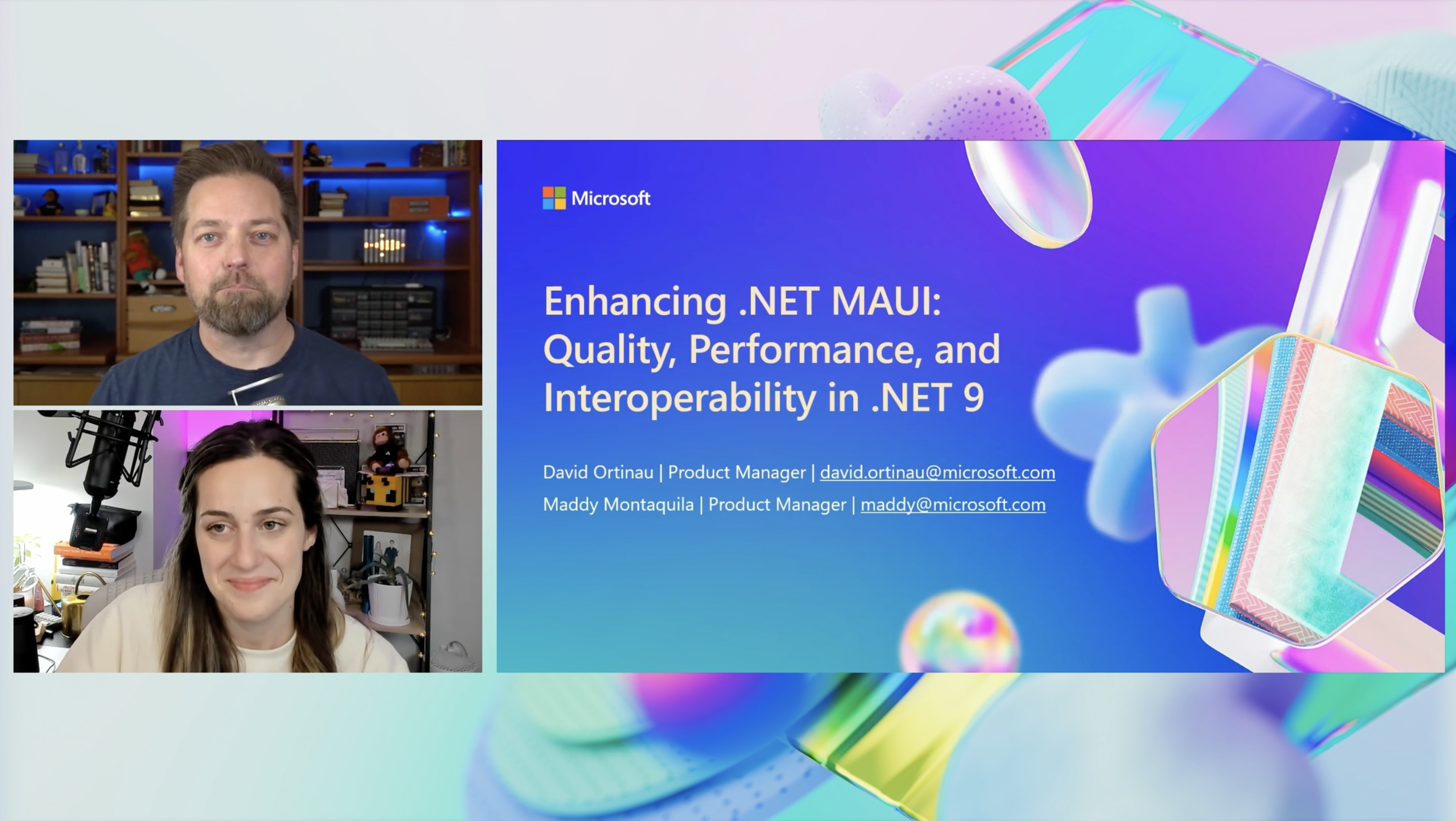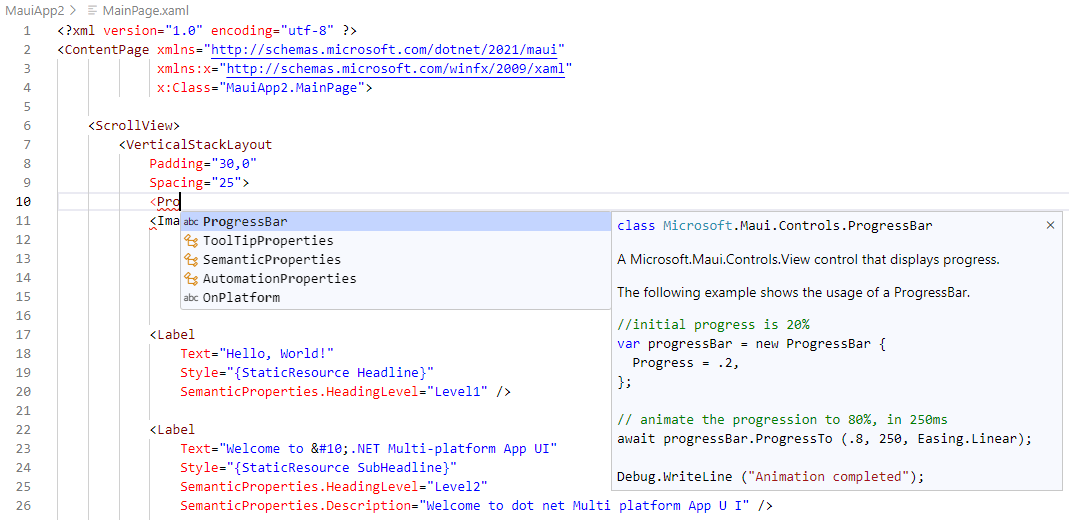Sands of MAUI: Issue #146

Welcome to the Sands of MAUI—newsletter-style issues dedicated to bringing together the latest .NET MAUI content relevant to developers.
A particle of sand—tiny and innocuous. But put a lot of sand particles together and we have something big—a force to reckon with. It is the smallest grains of sand that often add up to form massive beaches, dunes and deserts.
.NET developers are excited with the reality of .NET Multi-platform App UI (.NET MAUI)—the evolution of modern .NET cross-platform developer technology stack. With stable tooling and a rich ecosystem, .NET MAUI empowers developers to build native cross-platform apps for mobile/desktop from single shared codebase, while inviting web technologies in the mix.
While it may take a long flight to reach the sands of MAUI island, developer excitement around .NET MAUI is quite palpable with all the created content. Like the grains of sand, every piece of news/article/documentation/video/tutorial/livestream contributes toward developer experiences in .NET MAUI and we grow a community/ecosystem willing to learn & help.
Sands of MAUI is a humble attempt to collect all the .NET MAUI awesomeness in one place. Here’s what is noteworthy for the week of May 28, 2024:
.NET Announcements
Microsoft’s big developer conference happened last week—Microsoft Build was hosted in Seattle and online May 21–23, 2024. While the focus was on all things AI, there was quite a bit of buzz/updates for .NET, and the .NET Team compiled all the news in one post—.NET announcements from Microsoft Build 2024.
Microsoft Build was a great opportunity to dive deep into the latest advancements with AI and uncover ways developers can leverage the power of AI into their workflows. Modern .NET makes it easy to infuse smartness in apps, and developers have plenty of inspiration and tools to explore AI integration from .NET apps.
Aside from AI advancements, .NET enjoyed quite a bit of love—there are new sets of features and tools designed to make .NET development faster and easier. The new technology stack that streamlines development of .NET cloud-native apps and services is .NET Aspire—now generally available. There are language improvements with C# 13 and performance tuning across .NET to streamline execution times with better memory management. There are also tons of enhancements to .NET libraries and frameworks including ASP.NET Core, Blazor, .NET MAUI, desktop stack and more. Microsoft Build was a great conference to connect with developers globally and grow skills—lots of .NET content to catch up on.

.NET MAUI Updates
.NET MAUI is built to enable .NET developers to create cross-platform apps for Android, iOS, macOS and Windows, with deep native integrations, platform-native UI and hybrid experiences that extend the reach of Blazor/JS web UI technologies. David Ortinau and Maddy Montaquila did a pre-recorded session at Microsoft Build to cover all the updates from the .NET MAUI world—quality, performance and interoperability with .NET MAUI in .NET 9.
The discussions started with Microsoft’s investments in client app development and where .NET MAUI fits—it is the evolution of cross-platform native app development with .NET. Since the .NET 8 release, .NET MAUI has enjoyed great momentum, and developer adoption numbers are impressive. David and Maddy showed off the latest Visual Studio tooling for .NET MAUI, before diving into what’s next—developer productivity is supposed to get a whole lot better with .NET MAUI for .NET 9.
Roadmaps for the .NET MAUI platform work involve foundational updates for iOS and Android, as well as overall framework stability. The Hybrid story with .NET MAUI also keeps getting better, now welcoming Blazor and JavaScript investments with open arms—there are VS templates in the works that allow developers to share code better between web and native apps. The future is sunny with .NET MAUI—lots of work being put in by Microsoft and the community toward a rich, productive ecosystem.

XAML IntelliSense
Visual Studio Code is the uber-popular lightweight code editor that works seamlessly across Windows/macOS/Linux. While Visual Studio continues to be the rich IDE on Windows, VS Code represents the engineering consolidation of developer tooling across platforms. The lightweight editor brings a rich Extensions ecosystem and provides consistency of developer experiences, particularly for .NET MAUI. Marco Goertz announced that .NET MAUI developer productivity in VS Code has gotten a big boost—XAML IntelliSense support is now out on the release channel.
XAML has had a long developer history as a UI visual tree markup language and continues to be the dominant way .NET MAUI developers build their cross-platform UI. With support for mobile and desktop form factors, XAML offers .NET MAUI developers the much-needed UI flexibility and a rich tooling ecosystem around XAML in Visual Studio helps with developer productivity. There is no denying, however, that XAML can get a little verbose, and .NET MAUI developers using VS Code have been lacking proper XAML IntelliSense support.
While those using GitHub Copilot can get some XAML completion help, Marco has great news with true XAML IntelliSense now being built into VS Code. The production-ready build of XAML IntelliSense in VS Code is now out—it requires the latest bits of C# and .NET MAUI VS Code Extensions. From property value completions, visual state management, animations and more, XAML IntelliSense being built into VS Code is very good news for .NET MAUI developers—this was a long time in the making and a big engineering effort. Kudos.

Telerik Release
Modern mobile/desktop clients or web frontends are complicated—developers can use all the help available to stay productive. Progress Software maintains a suite of UI components and libraries/tools to help developers be more successful—Telerik UI for all things .NET and Kendo UI for all things JavaScript. There are fresh new goodies to explore—say hello to the Telerik and Kendo UI 2024 Q2 release. With the latest release, Progress aims to set the standard for application development with generative AI integration, enhanced design system capabilities and accessible data visualization.
It is the age of AI, and developers can benefit with the right UI that helps infuse AI benefits into apps. The new AI Prompt control across all Telerik and Kendo UI libraries allows developers to integrate Generative AI capabilities into web, mobile and desktop apps. Additionally, there are new AI-powered Smart Components that help developers create smarter UX with vector search, local embeddings and AI service integrations.
Design system capabilities get a major boost in the new release, while data visualization becomes more accessible. There are lots of new enterprise-ready UI components with support for latest runtimes—across ASP.NET Core, Blazor, .NET MAUI, Angular, React, WinUI, WPF, WinForms and more. The latest Telerik/Kendo UI release embraces the latest framework advancements and AI integrations, while supporting modernization of older technology stacks—polished UI all across for a developer productivity boost.

Blazing into Summer
Blazor is eating the world. Blazor is the free, open-source and much beloved web framework for building modern web apps. Developers can leverage the power of modern .NET, C# front and back, and modern tooling to build interactive beautiful web apps. The Blazor component model, rendering engine and styling mechanisms offer flexibility—and all of Blazor goodness is also welcome on native mobile/desktop apps through .NET MAUI. For the northern half of the earth, the days are getting longer and the sun is shining brighter; it’s time to start off summer right—say hello to Blazing into Summer!
Hosted by Ed Charbeneau, Blazing into Summer is an annual tradition—a long livestream on twitch.tv/codeitlive to celebrate all things Blazor. Developers can expect to learn the latest features/tooling with Blazor, as well as how to take Blazor goodness across platforms. This years speaker lineup looks fun—Gill Cleeren starts off with full-stack web UI and Blazor render modes, before Stacy Cashmore talks up all-important authentication with Blazor. Beth Massi and an aging developer are all about Blazor Hybrid—taking Blazor across mobile/desktop platforms and enabling developers to share code/styles between web and native apps. And no Blazor discussion is complete without Daniel Roth talking up what’s latest with Blazor in .NET 8 and looking ahead at .NET 9. Overall, should be a great day of streaming with loads of great content, chatter and laughs—Blazor fans will do well tuning into Blazing into Summer on May 29.

That’s it for now.
We’ll see you next week with more awesome content relevant to .NET MAUI.
Cheers, developers!

Sam Basu
Sam Basu is a technologist, author, speaker, Microsoft MVP and gadget lover. With a long developer background, he also worked as a Developer Advocacy Manager for advocating modern web/mobile/cloud development platforms on Microsoft/Telerik/Kendo UI technology stacks. His spare times call for travel, fast cars, cricket and culinary adventures with the family.

